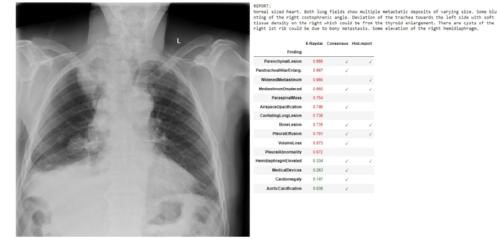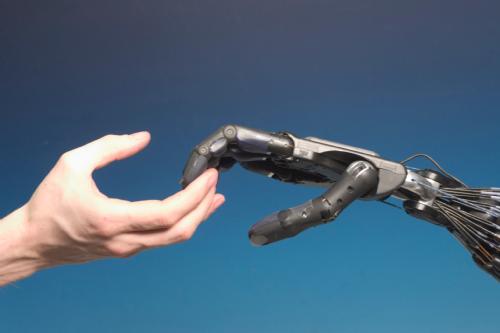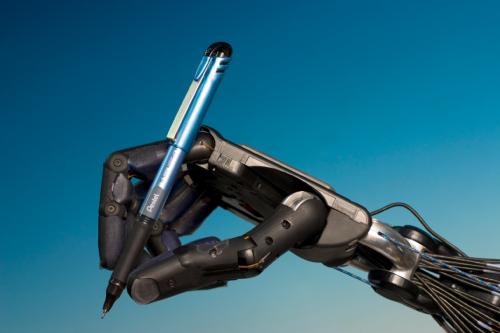“The ultimate second opinion”: AI just as good as doctors at analysing X -rays, shows new study
AI can analyse X-rays and diagnose medical issues just as, or more, accurately than doctors, a new study led by the University of Warwick has found.
The AI, which has been trained on 2.8 million historic chest X-rays from over 1.5 million patients, scans X-Rays for 37 possible conditions.
It was just as accurate or more accurate than the doctor’s analysis at the time the X-ray was taken for 35 out of 37 conditions (94%).
The AI software can scan X-rays as soon as they are taken for possible conditions and flags any abnormalities. It will then give a percentage chance of each of the abnormalities being present. The AI also understands the seriousness of the different conditions and will flag the more urgent ones to doctors accordingly.
To verify the accuracy of the AI, a sample of over 1,400 X-Rays it had analysed were cross examined by a group of senior radiologists, who compared the diagnoses made by the AI with the historical diagnoses by radiologists at the time.
The AI is a collaboration between Warwick, King’s College London and several NHS sites funded by a Wellcome Trust Innovator Award. The programme also uses a large language model to understand the historical reports written by clinicians – the same underlying technology used by other AI programmes, such as ChatGPT.
Giovanni Montana, Professor of Data Science at WMG at the University of Warwick, and lead author, suggested that the AI tool could either be used as a screening tool for radiologists, or to offer “the ultimate second opinion”, avoiding human bias.
Professor Montana commented: “This programme has been trained on millions of X-rays and is highly accurate. It eliminates the elements of human error, which is unavoidable, and bias. If a patient is referred for an X-ray with a heart problem, doctors will inevitably focus on the heart over the lungs.
“This is totally understandable but runs the risk of undetected problems in other areas. This AI eliminates that human bias – it’s the ultimate second opinion”.
Co-author Professor Vicky Goh of King’s College London, and immediate past Chair of the Academic Committee at the Royal Society of Radiologists commented: “Current AI programmes available to us in the NHS only have a limited scope. Comprehensive AI programmes like this will be the future of medicine, with AI acting as a co-pilot for busy doctors.
 “With the acute shortage of radiologists in the UK, programmes like this will facilitate interpretation and reduce delays for diagnosis and treatment”.
“With the acute shortage of radiologists in the UK, programmes like this will facilitate interpretation and reduce delays for diagnosis and treatment”.
There is also the possibility that the AI could look at the X-Rays where no abnormalities are found, which is around half of all of them, and flag this to doctors in a way which could improve efficiency for the NHS. By allowing AI to weed out X-Rays with no abnormalities found, radiologists will have more time to focus on challenging and more critical tests.
A recent poll by the Royal College of Radiologists found that shortages of radiologists were leading to longer wait times, and delays in treatment, at 97% of the UK’s cancer treatment centres.
This AI software – entitled X-Raydar – is designed to help reduce the workload for doctors and cut delays. Remarkably, the research group has open sourced the entire software for non-commercial uses to speed up the pace of research development in this domain.
The software can be seen in use in a video here.
Robot hands one step closer to human thanks to WMG AI algorithms
· The Shadow Robot Dexterous Hand is comparable to a human hand, reproducing all of its degrees of freedom
· While dexterous manipulation of objects is a fundamental everyday task for humans, it is still very challenging for autonomous robotic hands to master
· Researchers at WMG, University of Warwick, have developed novel artificial intelligence algorithms so the robot can learn how to manipulate objects just like humans do
· In simulated environments, the robotic hands learn on their own how to coordinate movements and execute tasks like throwing a ball to each other and spinning a pen
 The Shadow Robot Dexterous Hand is a robot hand, with size, shape and movement capabilities similar to those of a human hand. To give the robotic hand the ability to learn how to manipulate objects researchers from WMG, University of Warwick, have developed new AI algorithms.
The Shadow Robot Dexterous Hand is a robot hand, with size, shape and movement capabilities similar to those of a human hand. To give the robotic hand the ability to learn how to manipulate objects researchers from WMG, University of Warwick, have developed new AI algorithms.
Robot hands can be used in many applications, such as manufacturing, surgery and dangerous activities like nuclear decommissioning. For instance, robotic hands can be very useful in computer assembly where assembling microchips requires a level of precision that only human hands can currently achieve. Thanks to the utilization of robot hands in assembly lines, higher productivity may be achieved whilst securing reduced exposure from work risk situations to human workers.
In the paper, ‘Solving Challenging Dexterous Manipulation Tasks With Trajectory Optimisation and Reinforcement Learning’, researchers Professor Giovanni Montana and Dr Henry Charlesworth from WMG, University of Warwick have developed new AI algorithms – or the “brain” - required to learn how to coordinate the fingers’ movements and enable manipulation.
Using physically realistic simulations of Shadow’s robotic hand, the researchers have been able to make two hands pass and throw objects to each other, as well as spin a pen between its fingers. The algorithms however are not limited to these tasks but can learn any task as long as it can be simulated. The 3D simulations were developed using MuJoCo (Multi-Joint Dynamics with Contact), a physics engine from the University of Washington.
The researchers’ approach uses two algorithms. Initially, a planning algorithm produces a few approximate examples of how the hand should be performing a particular task. These examples are then used by a reinforcement learning algorithm that masters the manipulation skills on its own. By taking this approach, the researchers have been able to produce significantly better performance compared to existing methodologies. The simulation environments have been made publicly available for any researcher to use.
Now that the algorithms have been successful in the simulations, Professor Montana’s team will continue to work closely with Shadow Robot and test the AI methodology on real robotic hardware, which could see the hand advance one step closer to use in the real day to day life. In a second paper, ‘PlanGAN: Model-based Planning With Sparse Rewards and Multiple Goals’, to be presented at the 2021 NeurIPS conference, the WMG researchers have also developed a novel and general AI approach that enables robots to learn tasks such as reaching and moving objects, which will further improve hand manipulation applications.
Professor Giovanni Montana, from WMG, University of Warwick comments: “The future of digitalisation relies on AI algorithms that can learn autonomously, and to be  able to develop algorithms that give Shadow Robot’s hand the ability to operate like a real one is without any human input is an exciting step forward. These autonomous hands could be used in the future to deliver robotic surgeons, to increase the productivity of assembly lines and to replace humans in dangerous jobs such as bomb disposal.”
able to develop algorithms that give Shadow Robot’s hand the ability to operate like a real one is without any human input is an exciting step forward. These autonomous hands could be used in the future to deliver robotic surgeons, to increase the productivity of assembly lines and to replace humans in dangerous jobs such as bomb disposal.”
“In future work we will let the robots perceive the environment as accurately as humans do, not only through computer vision algorithms that can see the world, but through sensors that detect temperature, force and vibrations so the robot can learn what to do when it feels those sensations.”
Rich Walker, Managing Director of the Shadow Robot Company, in London, comments:
“ When we started building dexterous hands, it was because there was no way to get hold of one without building it! 20 years later, we are now seeing researchers like Giovanni deliver the promise of the hardware by creating algorithms clever enough to control the robot hand – soon perhaps we will see super-human performance?”
ENDS
3 DECEMBER 2020
NOTES TO EDITORS
High-res images available at:
https://warwick.ac.uk/services/communications/medialibrary/images/november_2020/holding_pen.jpg
Caption: Shadow Dexterous Hand
Credit: Shadow Robot Company
https://warwick.ac.uk/services/communications/medialibrary/images/november_2020/human_hand_and__handc_crw_9344.jpg
Caption: Shadow Dexterous Hand
Credit: Shadow Robot Company
https://warwick.ac.uk/services/communications/medialibrary/images/november_2020/with_egg.jpg
Caption: Shadow Dexterous Hand
Credit: Shadow Robot Company
Video available at: https://www.youtube.com/watch?v=mUXluGnoDRk
Link to collection of simulation videos: https://dexterous-manipulation.github.io/
Link to papers:
Solving Challenging Dexterous Manipulation Tasks with Trajectory Optimisation and Reinforcement Learning
https://arxiv.org/abs/2009.05104
PlanGAN: Model-based Planning with Sparse Rewards and Multiple Goal
https://arxiv.org/abs/2006.00900
Shadow Robot Company: www.shadowrobot.com / jyoti@shadowrobot.com
For further information please contact:
Alice Scott
Media Relations Manager – Science
University of Warwick
Tel: +44 (0) 7920 531 221
E-mail: alice.j.scott@warwick.ac.uk
New research finds that artificial intelligence can dramatically cut time needed to process abnormal chest x-rays
New research has found that a novel Artificial Intelligence (AI) system can dramatically reduce the time needed to ensure that abnormal chest X-rays with critical findings will receive an expert radiologist opinion sooner, cutting the average delay from 11 days to less than 3 days. Chest X-rays are routinely performed to diagnose and monitor a wide range of conditions affecting the lungs, heart, bones, and soft tissues.
Researchers from WMG at the University of Warwick, working with Guy’s and St Thomas’ NHS HospitalsLink opens in a new window, extracted a dataset of half million anonymised adult chest radiographs (X-rays) and developed an AI system for computer vision that can recognise radiological abnormalities in the X-rays in real-time and suggest how quickly these exams should be reported by a radiologist. In the process of building the AI system, the team developed and validated a Natural Language Processing (NLP) algorithm that can read a radiological report, understand the findings mentioned by the reporting radiologist, and automatically infer the priority level of the exam. By applying this algorithm to the historical exams, the team generated a large volume of training exams that allowed the AI system to understand which visual patterns in X-rays were predictive of their urgency level.
The research team, led by Professor Giovanni Montana, Chair in Data ScienceLink opens in a new window in WMG at the University of Warwick, found that normal chest radiographs were detected with a positive predicted value of 73% and a negative predicted value of 99%, and at a speed that meant that abnormal radiographs with critical findings could be prioritised to receive an expert radiologist opinion much sooner than the usual practice.
detected with a positive predicted value of 73% and a negative predicted value of 99%, and at a speed that meant that abnormal radiographs with critical findings could be prioritised to receive an expert radiologist opinion much sooner than the usual practice.
The results of the research are published today, 22nd January 2019 in the leading journal Radiology in a paper entitled “Automated triaging and prioritization of adult chest radiographs using deep artificial neural networks.”
WMG’s Professor Giovanni Montana said:
“Artificial intelligence led reporting of imaging could be a valuable tool to improve department workflow and workforce efficiency. The increasing clinical demands on radiology departments worldwide has challenged current service delivery models, particularly in publicly-funded healthcare systems. It is no longer feasible for many Radiology departments with their current staffing level to report all acquired plain radiographs in a timely manner, leading to large backlogs of unreported studies. In the United Kingdom, it is estimated that at any time there are over 300,000 radiographs waiting over 30 days for reporting. The results of this research shows that alternative models of care, such as computer vision algorithms, could be used to greatly reduce delays in the process of identifying and acting on abnormal X-rays - particularly for chest radiographs which account for 40% of all diagnostic imaging performed worldwide. The application of these technologies also extends to many other imaging modalities including MRI and CT.”
ENDS
Note for Editors:
All historical radiographs in our dataset were formally reported by one of 276 different reporters including board-certified radiologists, trainee radiologists and accredited reporting radiographers. The reports and images used in this study were anonymized prior to modelling thus did not contain any referral information or patient-identifying data.
It’s a hat trick!
Three WMG Professors have now joined the The Alan Turing InstituteLink opens in a new window as Fellows.
 Our Professor of Cyber Systems Engineering Carsten Maple, Professor of Data Science, Giovanni Montana, and Professor of Marketing and
Our Professor of Cyber Systems Engineering Carsten Maple, Professor of Data Science, Giovanni Montana, and Professor of Marketing and  Service Systems Irene NgLink opens in a new window; are now all part of the prestigious line-up of expert Fellows.
Service Systems Irene NgLink opens in a new window; are now all part of the prestigious line-up of expert Fellows.
The Alan Turing Institute is a national body championing data science and artificial intelligence research. It was created by five founding universities - Cambridge, Edinburgh, Oxford, UCL and the University of Warwick plus the EPSRC, with a further eight new universities – Leeds, Manchester, Newcastle, Queen Mary University of London, Birmingham, Exeter, Bristol, and Southampton – joining in 2018.
WMG establishes new Centre for Applied Artificial Intelligence
WMG, at the University of Warwick, is investing in data driven innovations with a new Centre for Applied Artificial Intelligence. The Centre will enable industry and business to leverage large volumes of digital information to gain competitive insights through Artificial Intelligence methods.
This new centre brings together several applied areas of activity where WMG has an established track record of excellence. It will support the continued expansion of existing research groups in response to the ever-changing landscape of UK industrial needs. Two new appointees, Professor Giovanni Montana and Professor Mehrdad Dianati, will spearhead the Centre working closely with other academic colleagues in Intelligent Vehicles, WMG Cyber Security Centre and the Institute of Digital Healthcare.
